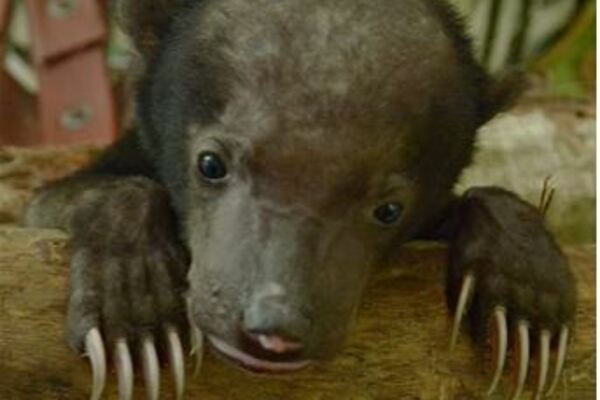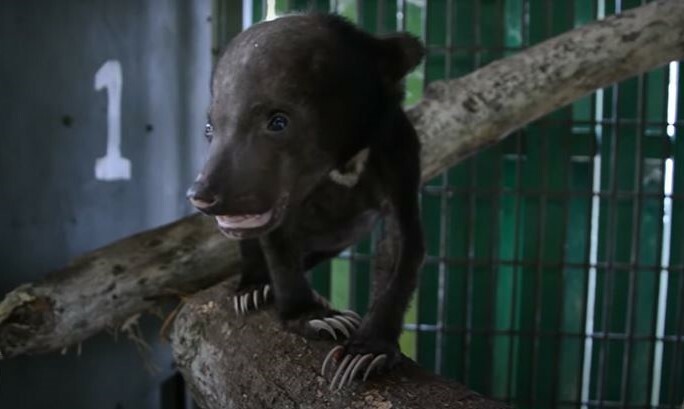
Betung was rescued by the Sabah Wildlife Department in August 2020. She was a victim of the exotic pet trade. She had been taken as a tiny cub and kept in a cage for around 5 months. Her mother was most likely killed when she was poached.
She was extremely malnourished when she arrived at the Borean Sun Bear Conservation Centre weighing only 1.4kg.
After veterinary care and around-the-clock attention from human surrogate mothers, Betung began to gain strength as well as confidence.
It has been a long road for this tiny scrap, but this beautiful 3 year old female bear has shown her fighting spirit and has progressed to now roaming the sanctuary's protected forest area, climbing the tallest trees and foraging for termites.
She enjoys spending time on her own but has also made friends with some of the other orphans at the sanctuary, including Kipaku.
It is hoped that one day Betung will return to the true wild.
There are 44 rescued bears at BSBCC - 17 adult males, 21 adult females and 6 cubs/juveniles including Betung and Tenom (who we have written about before).
In addition, 12 bears have been released to the wild.
Image: Betung starts to get better after weeks of around-the-clock care at the sanctuary
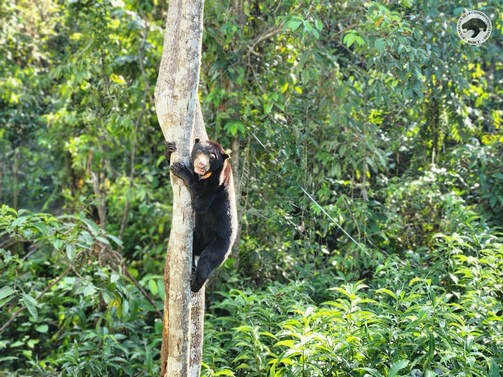
Betung in the forest at the sun bear sanctuary.
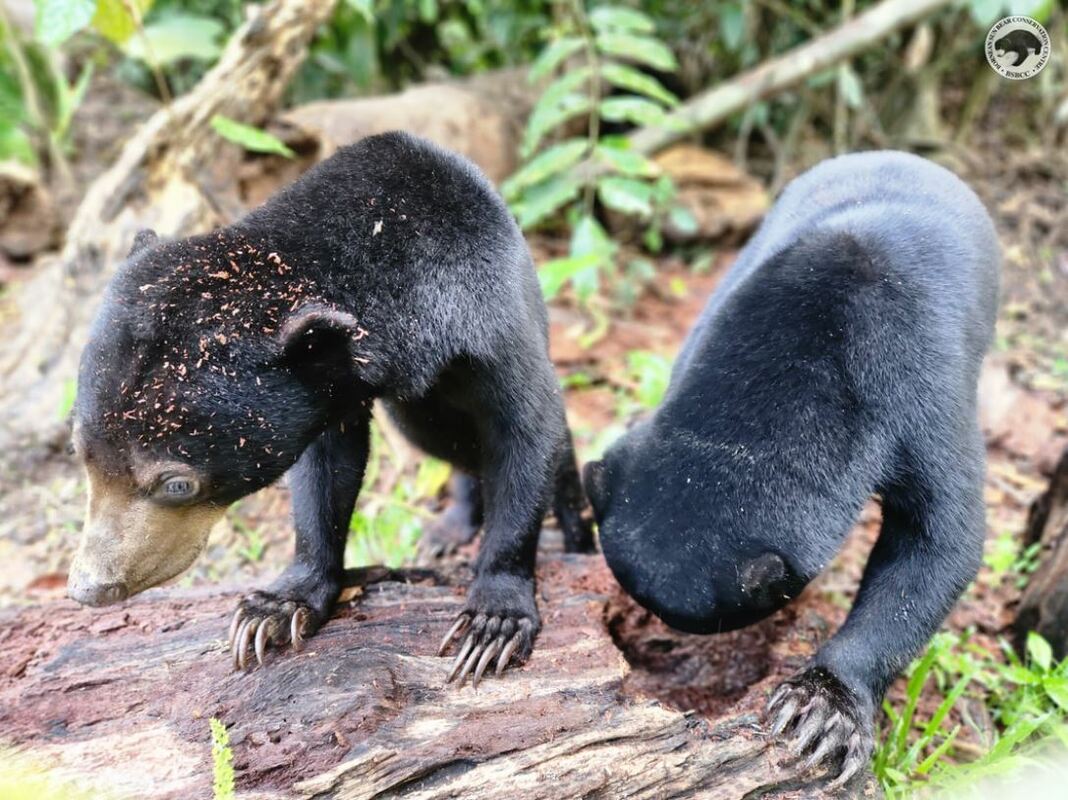
The sun bear is the smallest, most arboreal and least studied bear. It is the second rarest bear species, after the giant panda.
Their name comes from the pale horseshoe shape on their chests, which is said to resemble the setting or rising sun. No two markings are the same.
They have a very long tongue at 20 – 25cm. This helps them extract honey from bee hives, earning them the alternative name ‘honey bear’ or ‘beruang madu’ in Malay and Indonesian.
Sun bears live in tropical lowland forests and are the only bear in South-East Asia. They are mainly diurnal and do not hibernate but build nests in trees to sleep in. They are omnivores and primarily eat invertebrates, fruit and honey.
Threats to Sun Bears
The total sun bear population has declined by at least 30% in the last 30 years contributing to sun bears being classified as ‘vulnerable’ in 2007 meaning they are at high risk of extinction in the wild (IUCN 2007). Sun bears face three main threats:
Habitat loss – Like many species, deforestation and degradation of habitat has dramatically decreased their numbers. The main causes in Borneo are plantation development, unsustainable or illegal logging and human-caused fires. In Sumatra and Borneo, large-scale conversion of forest to oil palm or other cash crops is proceeding at a rate of 1,000s of km² per year (Holmes 2002).
Commercial hunting – Sun bears are primarily hunted for their gall bladders (for use in Chinese folk medicine) and bear paws (as an expensive delicacy). In China and Vietnam, bile is milked from bears while they are still alive. Bears are routinely restocked as they do not live long. Killing sun bears is illegal in all of their native counties but is largely uncontrolled.
Pet trade – Sun bears are the smallest bear in the world. As such, their cubs are considered incredibly cute and there is a high demand for them as pets. The mother is killed and the orphaned cub is removed from the wild and commonly kept in small cages with inadequate care.
Image: Betung and Kipaku in the forest doing what bears do
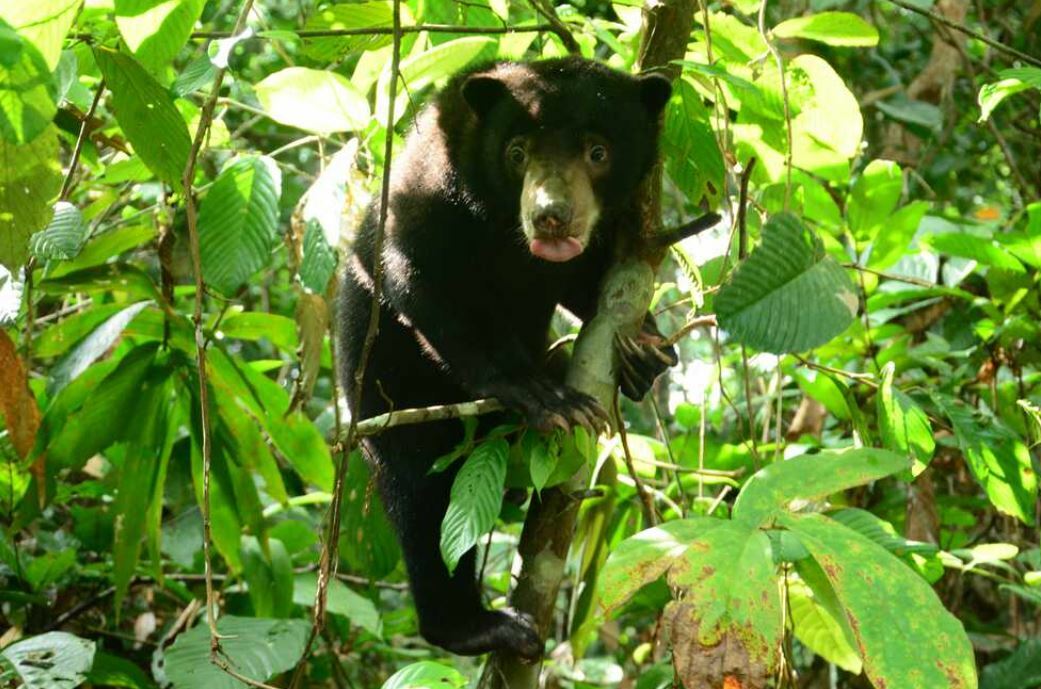
Images: all images courtesy of Bornean Sun Bear Conservation Centre
In 2021, as part of our 21 for 21 campaign which supported 21 small specific projects all around the world, we donated £5,000 GBP to BSBCC to support its sun bear rescue and rehabilitation facility in Sabah, Malaysian Borneo. The funds were used for satellite tracking collars to monitor the movements of bears like Betung, when they are released to the wild.

